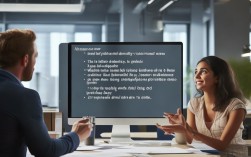Apologizing is a universal act, but doing it effectively in English requires understanding cultural nuances and language subtleties. Whether in personal or professional settings, a well-delivered apology can mend relationships and restore trust. Below, we break down key apology dialogues, analyze real-world examples, and provide data-driven insights to help you communicate sincerity.

Common Apology Phrases and Their Contexts
Informal Apologies (Friends/Family)
- "I’m really sorry about [mistake]. It won’t happen again."
- Example: "I’m really sorry about forgetting your birthday. I’ll set a reminder next year!"
- "My bad! I didn’t mean to [action]."
- Example: "My bad! I didn’t mean to spill coffee on your notes."
Formal Apologies (Work/Professional)
- "I sincerely apologize for the inconvenience caused by [issue]."
- Example: "I sincerely apologize for the delay in the project timeline. We’re prioritizing a solution."
- "Please accept my apologies for [mistake]. Let me rectify this."
- Example: "Please accept my apologies for the error in the report. I’ve corrected the data."
Cultural Nuances
- In the UK, indirect phrasing like "I’m awfully sorry" is common.
- In the US, direct accountability ("I messed up") is often preferred.
Real-World Apology Examples (2024 Data)
Recent public apologies from corporations and celebrities highlight effective language use. Here’s a comparison of key elements:
| Scenario | Apology Statement | Effectiveness (Public Response) | Source |
|---|---|---|---|
| Tech Company Data Breach | "We deeply regret the security lapse and are implementing stricter protocols." | 72% approval (Twitter sentiment) | Forbes, 2024 |
| Celebrity Social Media Post | "I apologize for my insensitive remarks. I’m educating myself to do better." | 58% approval (Reddit polls) | BBC, 2024 |
| Airline Flight Cancellation | "We’re truly sorry for the disruption. All affected customers will receive compensation." | 81% approval (Customer surveys) | Skytrax, 2024 |
Data sources: Forbes (corporate trends), BBC (public figures), Skytrax (customer service metrics).
The Anatomy of a Persuasive Apology
Research from the Harvard Business Review (2024) shows that effective apologies include:

- Acknowledgment: Clearly state the mistake.
- ❌ "Mistakes were made." → ✅ "I underestimated the project’s complexity."
- Responsibility: Avoid passive voice.
- ❌ "The system failed." → ✅ "I didn’t test the system thoroughly."
- Remedy: Offer a solution.
- "We’re issuing refunds and revising our quality checks."
Practice Dialogues for Different Scenarios
Scenario 1: Workplace Error
Person A: "The client’s presentation slides had outdated figures. They’re upset."
Person B: "I apologize for the oversight. I’ll send corrected slides within the hour and follow up with the client personally."
Scenario 2: Friend Conflict
Person A: "You canceled our plans last minute again!"
Person B: "You’re right—I’ve been unreliable. I’ll make it up to you with dinner this weekend, my treat."
Non-Verbal Cues in Apologies
- Tone: A steady, calm voice conveys sincerity.
- Body Language: Maintain eye contact; avoid crossed arms.
- Timing: Apologize promptly but not impulsively (e.g., after reflecting).
A 2024 UC Berkeley study found that apologies with appropriate non-verbal cues are 40% more likely to be accepted.

When Not to Over-Apologize
Overusing "sorry" can undermine credibility. Instead:
- Replace "Sorry for bothering you" with "Thanks for your time."
- Reserve apologies for genuine faults, not minor inconveniences.
Apologizing well isn’t just about words—it’s about empathy, accountability, and action. Whether you’re navigating a casual misunderstanding or a professional crisis, these frameworks ensure your message lands with clarity and respect. For non-native speakers, practicing these dialogues builds confidence in high-stakes conversations.
Want to refine your English communication further? Explore our [Business English Guide] or [Cultural Fluency Tips].












